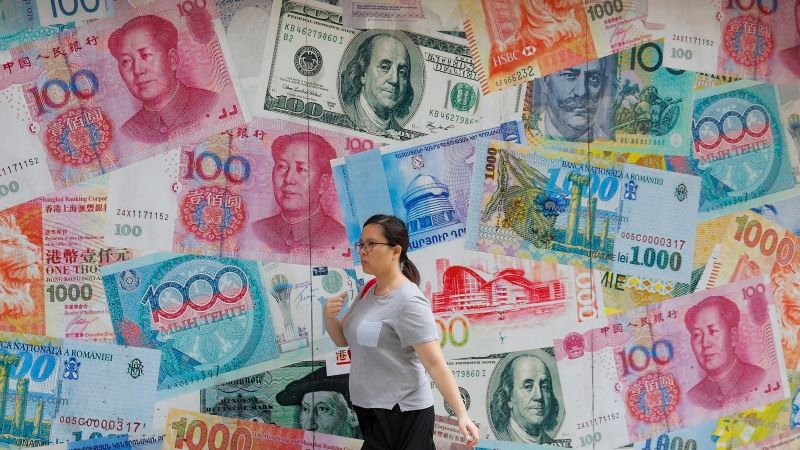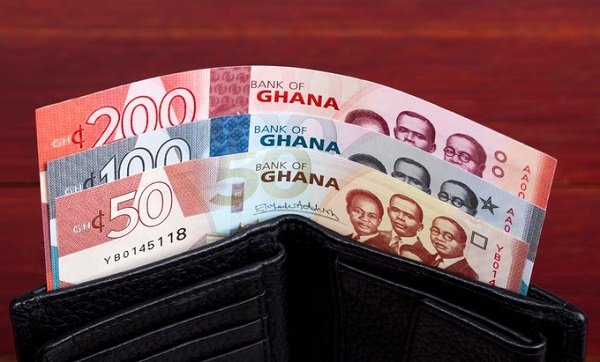
Kim Young-ik
The author is an adjunct professor at the Sogang University Graduate School of Economics.
U.S. President Donald Trump has announced that starting April 2, his administration will impose reciprocal tariffs on major trade partners. What follows may be even more consequential: Trump is likely to demand currency adjustments from those same countries. A “tariff war” is poised to escalate into a “currency war.”
The guiding principle of Trump’s foreign policy can be summed up as “pay your dues for security, and pay tariffs for trade.” This stance stems from the unsustainable size of the U.S. domestic and external debt. As of 2024, the U.S. federal government’s debt reached $36.2 trillion — 121.9 percent of the GDP. Though this ratio has declined from the record 125.7 percent set in 2020, it remains the highest since 1946, when it was 119.1 percent. In addition, the nation’s net international investment position — external assets minus liabilities — hit an all-time low, amounting to negative 89.9 percent of the GDP in 2024.

During Trump’s first term, his tariff policy primarily targeted China. Beijing’s economy was growing too fast. When China joined the World Trade Organization in 2001, it accounted for just 3.9 percent of the global GDP; by 2016, that figure had surged to 14.7 percent. Over the same period, the U.S. share declined from 31.2 percent to 24.6 percent. From 2001 to 2016, the U.S. trade deficit with China ballooned to $3.92 trillion.

Reciprocal tariffs accelerate trade war
To curb China’s rapid rise and reduce the bilateral trade deficit, Washington sharply increased tariffs on Chinese imports. According to the Peterson Institute for International Economics, the tariff rate on Chinese goods rose from 3.1 percent in January 2018 to 12 percent by September, and to 21 percent in 2019. In contrast, tariffs on goods from other countries ticked up only slightly — from 2.9 to 3 percent — indicating that Trump’s tariff measures during his first term were overwhelmingly aimed at China.
Beijing retaliated by raising tariffs on U.S. imports and devaluing the Chinese currency. Tariffs on U.S. goods jumped from 8 percent in January 2018 to 21.8 percent by September 2019. Between January 2018 and January 2020, China also depreciated its currency by 13.7 percent.
Paradoxically, the U.S. trade deficit with China widened further. From 2017 to 2021, the average annual deficit stood at $359.7 billion — $21.8 billion more than in the previous five years. China’s share of the global GDP rose from 14.7 percent in 2016 to 18.2 percent in 2021. The tariffs did little to reduce the U.S. government debt; it climbed from 103 percent of the GDP in 2017 to 119.9 percent by 2021. Granted, the Covid-19 pandemic in 2020 forced a surge in government spending. Still, the U.S. net external debt also ballooned — from 39.9 percent to 79.5 percent of the GDP over the same period.
The economy grew modestly faster under Trump: Annual GDP growth averaged 2.4 percent from 2017 to 2021, compared with 2.3 percent from 2012 to 2016. However, inflation also accelerated. Consumer prices rose at an annual rate of 2.3 percent under Trump, nearly double the 1.3 percent average in the preceding five years. The tariff hike failed to reduce the trade deficit or public debt — it merely drove up inflation.
Henry Kissinger, who served as secretary of state under Richard Nixon, once remarked, “It may be dangerous to be America’s enemy — but to be America’s friend is fatal.” In his first term, Trump mainly targeted adversary China with high tariffs. In his second term, he began with duties on allies such as Canada and Mexico.
During Trump’s first term, the U.S.-Mexico-Canada Agreement was concluded, creating the world’s largest free trade zone and allowing for the unfettered movement of goods, services and investment. But on the first day of his second term, Trump announced blanket 25 percent tariffs on Canada and Mexico, although those were later suspended. He soon extended the same rate to imports of steel, aluminum and automobiles. The reciprocal tariff actions slated for April 2 are expected to escalate the trade war further.
Tariffs severely weaken consumer sentiment
Can Trump’s tariff policy reduce the U.S. trade deficit and foster sound economic growth? The United States has long suffered from chronic current account deficits — averaging 3.4 percent of the GDP annually between 1990 and 2024, and rising to 3.7 percent in the past three years. The primary cause is the country’s low savings rate relative to its investment rate. Between 2000 and 2024, the average gross savings rate was 18 percent, well below the domestic investment rate of 21.4 percent. The federal government’s persistent fiscal deficits — averaging 4.6 percent of the GDP during the same period — have also deepened the current account imbalance. For the United States to narrow this deficit, households must increase savings and the government must cut spending.
Household savings remain low. The average household savings rate from 1990 to 2021 was 6.3 percent, but it fell to 3 percent in 2020. While it rebounded to 4.7 percent in 2023 and 4.5 percent in 2024, those levels still fall short of the long-term average. Meanwhile, the fiscal deficit surged to 6.1 percent of the GDP over the past three years. Tariffs alone cannot correct the current account imbalance.
In this context, the restructuring of the federal workforce led by Elon Musk’s Department of Government Efficiency is significant. Treasury Secretary Scott Bessent has described it as a “detox,” arguing that the economy and markets must be cleansed of the excessive fiscal stimulus of previous administrations. As government spending decreases, the current account deficit may begin to shrink.
At the same time, Trump’s tariff policies have dramatically dampened consumer sentiment, raised inflation expectations and curtailed actual consumer spending. In January, personal consumption expenditures fell by 0.2 percent from the previous month. While spending on services — accounting for 69 percent of all consumption — has continued to grow, the slowdown in job growth suggests even this category may decline.
The United States faces the risk of stagflation
The concern is that if consumption and government spending — two major components of the GDP — contract simultaneously, the U.S. economy could slide into a recession. The Organisation for Economic Cooperation and Development recently issued an interim economic outlook, lowering its global growth forecast for 2024 from 3.3 percent as projected in December to 3.1 percent due to mounting uncertainty. The forecast for U.S. economic growth was also revised downward — from 2.4 percent to 2.2 percent for this year, and from 2.1 to 1.6 percent for next year. In contrast, inflation expectations were revised sharply upward — from 2.1 percent to 2.8 percent for 2024, and from 2 percent to 2.6 percent for 2025. These projections suggest the risk of stagflation — rising prices amid economic stagnation. Reflecting these concerns, U.S. market interest rates remain elevated, while equity indices have fallen.

While reduced consumption and public spending may narrow the current account deficit, they risk tipping the economy into a recession. Should job losses follow, the Trump administration may blame trading partners and launch a currency war. That’s why renewed attention is being paid to a report written last November by White House Council of Economic Advisers Chair Stephen Miran, titled “A User’s Guide to Restructuring the Global Trading System.” In it, Miran argues that the overvalued dollar has inflicted irreparable damage on U.S. manufacturing and workers, and calls for new bilateral currency agreements with trading partners.

0
The United States has previously intervened to depreciate the dollar, most notably through the 1985 Plaza Accord. From February 1985 to December 1987, the dollar index plunged by 46.8 percent. The downward trend persisted through August 1992, with a cumulative decline of 50.8 percent. This depreciation helped reduce the current account deficit from 3.2 percent of the GDP in 1986 to around 1 percent by 1996.
Dollar depreciation likely — Prepare for forex risk
Following the reciprocal tariffs set for April 2, Trump’s tariff campaign may begin to wind down. Next on the agenda: currency pressure. The Trump administration is expected to target countries with large trade surpluses with the United States — including China, Mexico, Vietnam, Japan and Korea — accusing them of undervaluing their currencies and potentially labeling them currency manipulators. Unlike the multilateral coordination of the Plaza Accord, this time Washington may exert unilateral pressure, driving up the value of those countries’ currencies.
Should the U.S. economy slow or enter a recession, Trump will likely attack the Federal Reserve’s independence and demand aggressive rate cuts. This would weaken the dollar index and stoke inflation. The Trump administration is expected to promote supply-side price stability by expanding oil production, even as it pressures the Fed to lower rates.
Since tariffs alone cannot resolve the country’s external imbalances, the United States will likely demand currency adjustments from its major trading partners. Trump may convene finance ministers at his Mar-a-Lago estate to push for what could be dubbed the “Mar-a-Lago Accord.” Whether the United States can engineer a dollar decline while retaining its status as the global reserve currency remains uncertain — but the prospect of a lower dollar index is highly likely.
The foreign exchange market could enter a period of heightened volatility starting in April. Korean policymakers must remain alert to the possibility that the won may appreciate faster than other currencies. Corporations must take pre-emptive steps to hedge against growing currency risks. Historically, when the dollar index falls, equities in emerging markets — including Korea — have outperformed those in the United States. Retail investors heavily exposed to U.S. stocks should consider diversifying into other markets.
Translated from the JoongAng Ilbo using generative AI and edited by Korea JoongAng Daily staff.







